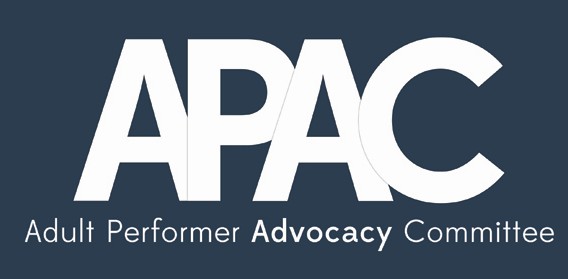The head of D.C.’s response to HIV/AIDS stressed on Monday that the city continues to make progress in its fight against the epidemic.

“We’re catching people earlier in the disease,” noted Dr. Gregory Pappas, director of the Department of Health’s HIV/AIDS, Hepatitis, Sexually Transmitted Disease and Tuberculosis Administration. “It used to be everybody who was tested pretty much had AIDS or was very close to having AIDS. Now, we’re finding people earlier in the disease.”
Pappas spoke to the Blade less than a week after DOH released its annual epidemiology report that showed new diagnoses of HIV in D.C. continue to drop, even though the percentage of the population living with HIV remains more than two times higher than the World Health Organization’s definition of a generalized epidemic.
A total of 14,465 people — or 2.7 percent — of Washingtonians were living with the virus at the end of 2010. The report further noted that African Americans remain disproportionately impacted by the epidemic with 4.3 percent of black D.C. residents living with HIV. 6.3 percent of black D.C. men had the virus, compared with 2.4 percent of whites and three percent of Latinos. DOH further noted that black women accounted for 92.4 percent of D.C. women with HIV.
The report further indicates that the number of new HIV diagnoses among black Washingtonians between 2006 and 2010 decreased 24 percent, compared to a 36 percent decrease among white D.C. residents during the same period.
Same-sex and heterosexual sexual contact remain the two leading modes of HIV transmission in the city. Slightly more than 77 percent of white D.C. residents and 55.5 percent of Latino Washingtonians who tested positive between 2006 and 2010 contracted the virus through men who have sex with men, compared to only 30.7 percent of black D.C. residents. Nearly 39 percent of black Washingtonians who tested positive during this period contracted the virus through heterosexual sexual contact.
DOH further noted that it distributed more than five million male and female condoms in 2011, and has tripled the number of publicly supported HIV tests from 2007. The city recommends that Washingtonians get tested at least once a year – and MSM have an HIV test every six months. Pappas said that one-third of D.C. residents get tested annually.
“We’re a national leader on that, but it’s way off from where we need to be,” he said.
D.C. Council member David Catania [I-At Large] introduced a bill last fall that would require doctors and other health care providers to attend HIV/AIDS workshops as part of their ongoing education requirements. Lawmakers subsequently approved the measure.
“We’re using that as a way to try and promote doctors to offer the test,” said Pappas.
In addition to increased testing, the DOH report further noted that roughly 89 percent of the 4,879 people who tested positive for the virus in D.C. between 2005 and 2009 were connected to HIV-specific care by the end of 2010. “We do well with connecting to care,” said Pappas, stressing the need for improved coordination between publicly funded clinics and HIV/AIDS community service providers. “The big problem is people don’t stay in care. And that’s where we’re falling down.”
Pappas credited the city’s needle exchange program for a 72 percent drop in HIV rates among intravenous drug users between 2007 and 2010—the city disposed of more than 340,000 syringes through its needle exchange program last year, which is an increase of 3,000 from 2010.Mortality rates for Washingtonians with HIV also fell by almost 50 percent from 2006 to 2010.
Pappas noted that half of those with HIV who die each year succumb to an unrelated illness, while the remaining 50 percent of people with the virus in D.C. die from HIV-related causes. He said liver failure associated with Hepatitis C has become one of the leading causes of death among people with HIV.
“It’s about 75 people annually, but that’s still too high in the District of Columbia,” said Pappas, referring to the city’s overall HIV mortality rate. “We can get to near zero deaths. We’ve gotten to zero new infections among kids, we can get to zero deaths or very near.”
Pappas further stressed that these HIV-related deaths once again highlight what he describes as the need for people with the virus to stay in treatment and continue to take their medication. “At this point since there’s no one in the District of Columbia that’s totally virally resistant now, right now all those people should be able to live,” he said.
D.C. preps for AIDS conference
The city continues to make final preparations for the International AIDS Conference that will kick off at the Walter E. Washington Convention Center on July 22.
HAHSTA will present 15 scientific abstracts during the five-day conference. The D.C. Center for AIDS Research, the body that coordinates HIV/AIDS-specific research in Washington, will highlight city-based research in a Global Village session that will be free and open to the public.
Mayor Vincent Gray and Maryland Gov. Martin O’Malley wrote a letter to President Obama earlier this year in support of a more regional-based strategy that Pappas said would allow neighboring jurisdictions to more effectively coordinate their responses to HIV/AIDS.
“The jurisdictions are working well together well on HIV/AIDS, but we still got a long ways to go,” he said, pointing to a lack of regional data. “I can tell you about D.C. in great detail, but when we’re talking about what’s going on around us, it’s a more difficult picture. We’ve got to look at that.”
Pappas also cited a hypothetical case of a Prince George’s County resident who may live across the street from a D.C. clinic that can have difficulties using their Maryland Medicaid to pay for HIV-related services in Washington as an example of the need for a more regional approach to fighting the epidemic. He also pointed to an estimate that treatment for a person with HIV costs $400,000 over the course of their lifetime—and the epidemic adds $1 million to D.C.’s long-term health care expenditures each day.
“Investment now will save huge amounts of money in the future,” said Pappas, referring to regional investment to combat HIV. “We can do better with the dollars we have if we coordinated better.”






